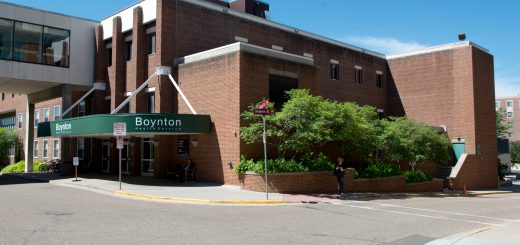Defining Nontraditional
Most UMTC undergraduates take the “traditional” road of high school to college, but when life happens, some have to choose “nontraditional” roads.
By Laura Martinez
What is a nontraditional student?
The University of Minnesota’s undergraduate advising website defines nontraditional students as students who have delayed enrollment, are enrolled part-time, work full-time while enrolled, are student parents, including single parents, or do not have a high school diploma.
Across the University, advising offices in different colleges see and assist nontraditional students in various ways. Some advisers extend that definition to include other identities, such as veterans and senior citizens.
Lisa Garrett, a senior adviser with the College of Continuing and Professional Studies (CCAPS), takes a broad view of the term.
“Nontraditional, from my background, tends to be adult learners,” she said. “Or they can be people that would not be within that traditional frame of mind: you’re coming directly from high school, living in the dorms, living with friends off campus. Nontraditional [students] may have families. They may have military backgrounds.”
Garrett is an adviser for the Multidisciplinary Studies program at CCAPS, the college most likely to cater to students with nontraditional paths. Her program is designed for students coming back to school after a two or more-year break from completing a degree. The break does not need to be continuous.
“A lot of my students need online work. They need evening classes. They have a few more barriers to access to the university than a traditional student would,” she said.
But identity and student status factor as well, said Jeff Olsen Krengel, an enrollment adviser at CCAPS. He sees nontraditional as encompassing not only student parents but also veterans and senior citizens, who take classes at the university for a discounted rate. Some students are also enrolled as “non-degree seeking,” which allows them to take classes even though they are not formally admitted to a degree or credit-certificate program.
“Non-degree is a student status,” he said. “A student who is also a parent has very different needs than a senior citizen. Or a veteran has maybe different needs, or perhaps shares multiple identities with being a veteran and a parent and a student.”
For Olsen Krengel, a traditional student at a four-year institution would be someone between the ages of 18 to 22 who went from high school to college graduation. Students who come into college at a later time or have had their experiences impacted by certain aspects of their identities could be defined as nontraditional.
“If you serve in the military and come back at 23…24…27…your life has progressed beyond what the developmental stages of an 18- to- 22-year-old are, but you still are coming in as a new student,” he said. “You’re still doing your first-year writing courses, all the things you did probably at 18, they’re now doing at 27, that would be nontraditional to me.”



